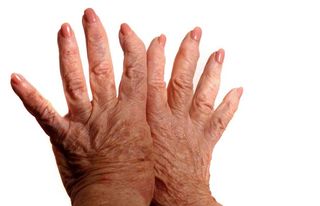Salud! 8 Ways Hispanic People Are Healthier
Intro

Hispanics are the fastest-growing major demographic group in the United States. Approximately 50 million out of 310 Americans are Hispanic (16.3 percent), and it is projected that the Hispanic population will rise to 103 million (25 percent) by 2050.
A number of ethnicities fall into the category of "Hispanic." The Centers for Disease Control and Prevention recognizes Hispanic, or Latino, people as those of Mexican, Puerto Rican, Cuban, Central and South American, or Spanish origin.
It is estimated that 64 percent of Hispanics in the United States are Mexican, 9 percent are Puerto Rican, 3.4 percent are Cuban and 2.8 percent are Dominican.
As the U.S. Hispanic population grows, researchers are increasingly paying attention to the health of this demographic. Each race and ethnicity tends to have a unique health profile, with lower risks for some diseases or a greater vulnerability to other conditions.
Here are eight areas where Hispanics seem to fare better than most other racial or ethnic groups in the United States.
Lower cancer risk

Overall, Hispanics have a lower risk of cancer diagnosis and death than most other U.S. populations, especially blacks and whites. One explanation may be that, compared to white and black populations, there are fewer Hispanics older than 85 years, according to a 2012 American Cancer Society report.
Nevertheless, cancer has surpassed heart disease to become the leading cause of death among Hispanics, according to an American Cancer Society report in 2012.
Among whites and blacks, heart disease remains the first cause of death, followed by cancer.
Although Hispanics have lower risks of cancer in general, some cancers occur more frequently in this population: cancers of the stomach, liver, cervix and gallbladder.
Lower use of special education services

Hispanic children and adolescents are less likely to have received special education or early intervention services at schools compared to black or white children. Kids who have disabilities or medical problems — such as developmental delays, autism or ADHD, among other conditions — may use these services, which the states provide.
Special educational and early intervention services are designed to meet the needs of children with special needs or disabilities. These services include parental counseling and therapy, along with medical services. According to a CDC report, during 2001 and 2011 the percentage of children younger than 18 who received special education services increased among Hispanic and white children, with no change among black children.
Higher teen births, but steeper decline

The latest CDC report on teen birth shows that the overall rate in the United States dropped to a historic low in 2011, and the group with the steepest decline was Hispanic teenagers.
Nationally, the birth rate of Hispanic teens decreased by 34 percent between 2007 and 2011, compared to a decline of 24 percent among black teens and 20 percent among white teenagers.
In 2011, the teen birth rate in Hispanics was close to 50 births in 1,000 teens, compared to 49 in black teens and 21 in white teens.
Longer life expectancy

Hispanic women have the highest life expectancy at birth of the major race and gender groups in the United States, according to National Vital Statistics Reports for 2011.
Life expectancy for Hispanic women is 83.7 years. White women are next at 81.1 years, followed by Hispanic men at 78.9 years.
The data show that these rankings have not changed since 2006; however, life expectancy has generally increased for all groups.
Reduced risk of arthritis

Hispanics are less likely than whites and blacks to be diagnosed with arthritis, according to a 2011 CDC survey.
In the survey, respondents answered whether they had been told that they had some form of arthritis, including rheumatoid arthritis, gout, lupus or fibromyalgia, the most common forms of arthritis.
Lower risk of autism

Nationwide, the estimated rate of children with autism is lower in Hispanics than in blacks and whites. In Hispanics, 79 children per 10,000 have autism, while the rate in white children is an estimated 120 per 10,000, and in black children, 102 per 10,000.
Florida is the only state in which there is a higher prevalence of autism among Hispanic children compared with white and black children, according to a 2008 CDC report.
Less medication used

The U.S. Census report released in 2012 found that Hispanics were the most likely individuals to be taking no prescription medication (73.2 percent), followed by blacks (61.6 percent) and whites (51.1 percent).
However, Hispanics have the highest rates of lacking health insurance in any racial or ethnic group within the United States, and this may have played a role in their lower medication usage. In 2010, a total of 30.7 percent of the Hispanic population lacked health insurance, as compared to 11.7 percent of the white population.
More likely to be married

The percentage of women ages 25 to 29 who have never been married was the lowest in Hispanics compared to other races and origins, according to a 2009 Census report.
Divorce was also lower in this age group among Hispanics, compared with blacks and whites.
Hispanics had higher rates of interracial marriages than blacks and whites.
Many studies have linked marriage to health benefits; for example, married women have a lower risk of heart disease, and married men who have a heart attack may get medical help faster. However, other research has shown that cohabitation offers the same psychological benefits that marriage might.
Sign up for the Live Science daily newsletter now
Get the world’s most fascinating discoveries delivered straight to your inbox.













